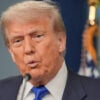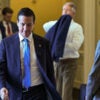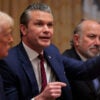The first rule for managing a crisis? Act like a grown-up.
Looking and really acting like an effective leader in tough times is job one.
That can be a tough task–particularly, in responding to a public health crisis with a deadly disease like Ebola. Distant wars and tax inversions are one thing: some care, some don’t.
But everyone takes a terrifying sickness that might potentially touch our families personally. We expect government officials to bring their “A” game.
Popular expectations of how a crises gets managed often come from what we watch on Netflix. In the Oval Office, the president barks orders into a red phone and saves the world.
But that is not how crisis management works in real life.. Instead, the U.S. has a ‘federal” system that places critical responsibilities on local, state and federal officials.
The tasks leaders at all levels have to take are simple– although in a crisis, the simple can be very difficult.
Step one is recognizing there is a crisis. Dallas Mayor Mike Rawlings gets it. After a second health worker in his city tested positive for Ebola, he warned in a press conference that the crisis might “get worse before it gets better.”
Even before the most recent case, Texas Gov. Rick Perry established a task force to lead the statewide effort. After news that the disease had spread beyond an isolated case, he announced would cut short a planned overseas. This week, President Obama signaled that he planned to switch into “crisis” mode, calling a high profile meeting of the cabinet, announcing calls to leaders overseas and postponing a trip for fundraising and promoting his domestic agenda.
Step two is correctly identifying the problem to be solved. For the White House, the problem isn’t the president’s popularity and poll numbers. It is ensuring there is no disease outbreak in the U.S. and working effectively to help contain the outbreaks in West Africa.
Convincing the American people that the president is focused on the right problem will be a challenge for the White House. The administration has lost a lot of credibility. The Oval Office has rightly come under criticism for its initial response to the outbreak. For example, the administration has stumbled explaining the issue and justifying the measures it has or has not taken. It has faltered credibly defining the risks Americans face. And it has been roundly criticized for its role in the Dallas response. These setbacks have undermined confidence in the White House.
Step three is taking steps that instill confidence in the leader and effectively address the problem. There are basic steps that have be effectively implemented to deal with a deadly infectious disease like Ebola. Washington needs to focus laser-like on doing its job.
Crisis management is critical task of presidential leadership. For Washington to give the American people the confidence Obama is doing his part, he will have to do more than exhibiting the trappings of leadership we see on TV shows like the West Wing. It’s not enough to handout photos from Oval Office meetings, take calls from foreign leaders and hold a press conference. The administration has to roll-up its sleeves and prove to the American people its doing the 1-2-3 of leading in a crisis.






























